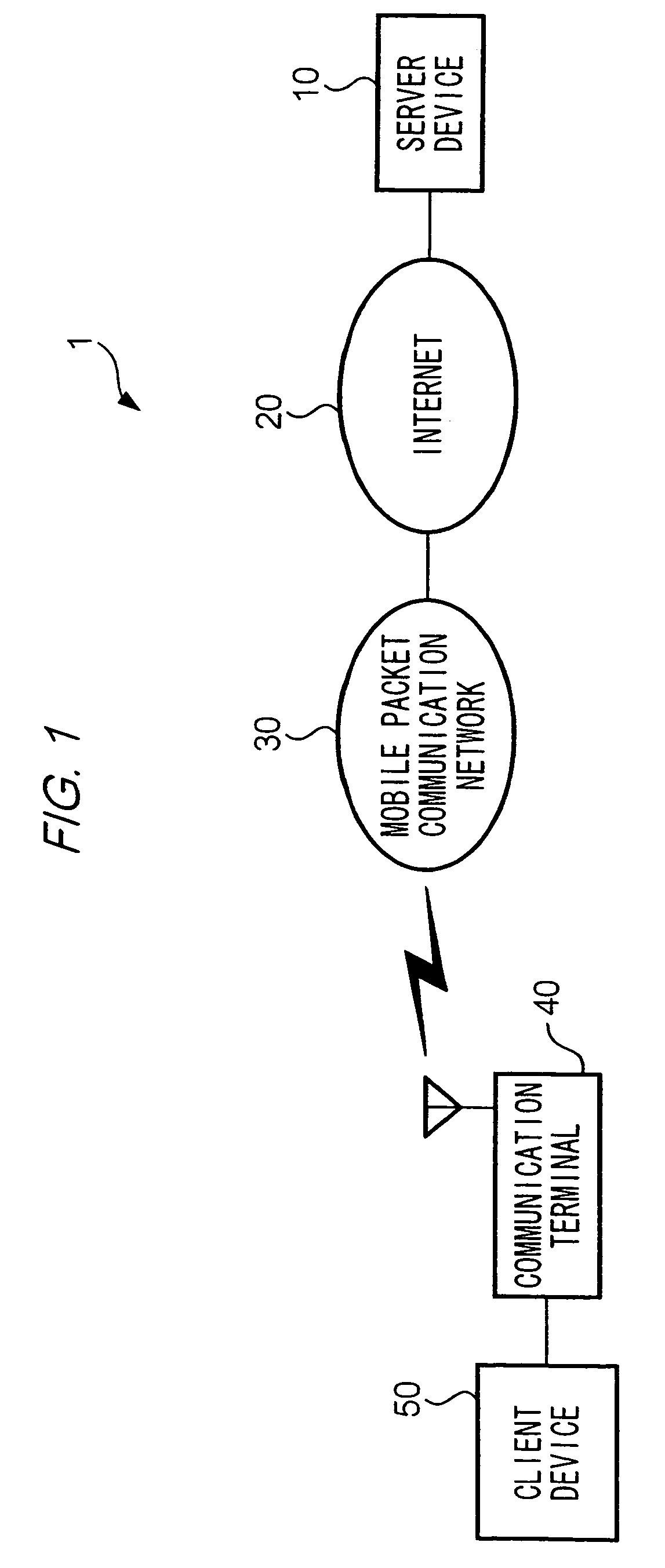Transmission control method and system
- Summary
- Abstract
- Description
- Claims
- Application Information
AI Technical Summary
Benefits of technology
Problems solved by technology
Method used
Image
Examples
first embodiment
A. First Embodiment
[0055]1. Configuration
[0056]Configuration of Communication System 1:
[0057]FIG. 1 is a block diagram illustrating a configuration of a communication system 1 according to a first embodiment of the present invention.
[0058]A communication terminal 40 is connected to a client device 50 and performs communications with client device 50. A mobile packet communication network 30 provides packet communication services to communication terminals 40 served by the network 30. Server device 10 performs packet communication with client device 50 via the Internet 20, mobile packet communication network 30, and communication terminal 40. It is assumed in the present embodiment that TCP (Transmission Control Protocol) is used to perform packet communications, thereby transmitting data segments.
[0059]Configuration of Server Device 10:
[0060]Next, a description will be given of a configuration of server device 10. Server device 10 is configured in the same way as a standard computer...
second embodiment
B. Second Embodiment
[0093]Next, description will be given of another example of performing packet communications between server device 10 and client device 50. Hereinafter, a description of the same components as the first embodiment will be omitted. Also, like components are described with like reference numerals being assigned.
[0094]1. Configuration
[0095]Configuration of Server Device 10:
[0096]A description will be given only of those configurations relating to the present embodiment.
[0097]ROM 103 of server device 10 stores a program for causing CPU 100 to perform a data segment transmission control process. The process will be described in detail in the following, and it should be noted that those portions that are the same as those of the first embodiment will not be described here.
[0098]In the present embodiment, in transmitting data segments to client device 50, CPU 100 performs congestion control in addition to utilizing the sliding window method described in relation to the ...
PUM
 Login to View More
Login to View More Abstract
Description
Claims
Application Information
 Login to View More
Login to View More - R&D
- Intellectual Property
- Life Sciences
- Materials
- Tech Scout
- Unparalleled Data Quality
- Higher Quality Content
- 60% Fewer Hallucinations
Browse by: Latest US Patents, China's latest patents, Technical Efficacy Thesaurus, Application Domain, Technology Topic, Popular Technical Reports.
© 2025 PatSnap. All rights reserved.Legal|Privacy policy|Modern Slavery Act Transparency Statement|Sitemap|About US| Contact US: help@patsnap.com



